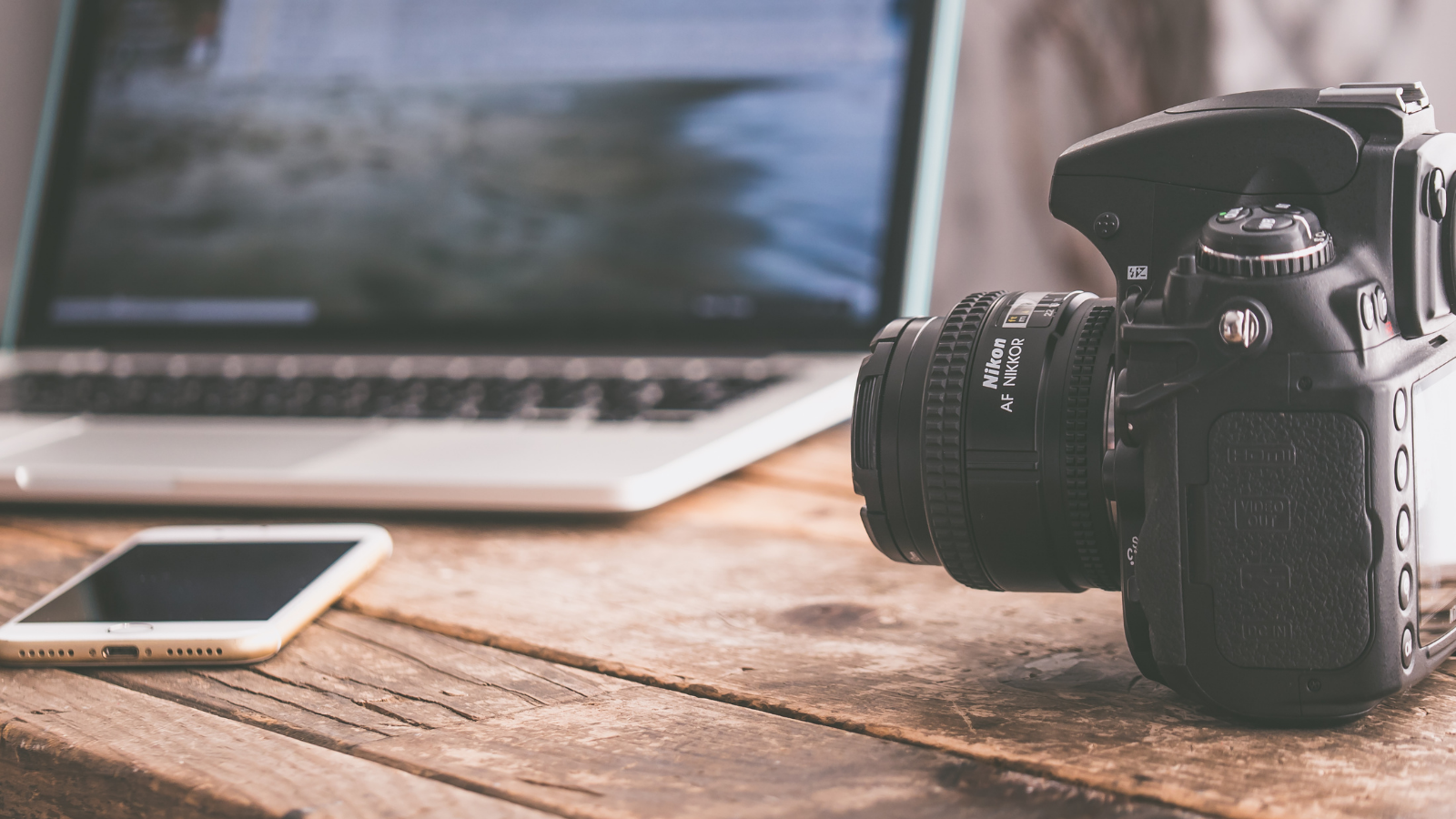
So, You Think You Want to Have a Digital Photoshoot?
First, a few things.
Photoshoots can be a significant investment for the client. Five-figure photoshoots used to mean a Caster person would be onsite. We’d spend days watching a photographer shoot the same shot over and over. The benefit? Easy. In real-time, we’d get the chance to say, “That background conflicts with their brand colors,” “That light is creating a hot spot,” or a favorite, “Well, that’s the wrong product.” Fixing anything after the fact is ALWAYS harder. The variables associated with managing a virtual photo have a greater scale and risk of problems than onsite, and after handling a few first-hand, I’ve curated some tips.
Work with Someone You Know and Trust
Having an existing relationship means the photography team knows what you’re looking for, and you know what to expect from them. It’s not always possible, but consolidating work to a singular, recurring creative partner makes for speedier communication and removes the learning curve often present when onboarding a new creative vendor.
Make the Creative Brief Anything but Brief
While any brief has to be detailed, making them even more specific than usual can compensate for the distance between you and the photography team. For in-person shoots, surfaces and props are usually pulled from a selection of options on-set. For a virtual photoshoot, you should instead assess available options in advance and build selections into the brief. Cover the details of total shots, including all variations of any shot you need and can’t get just with touchup. Being over-prepared means not panicking about missed shots after the set has been broken down.
See What the Photographer is Seeing in Real Time
Have the photographer share their camera’s perspective over the videoconferencing software you’re using to monitor the shoot (Zoom, Teams, etc.). By sharing the feed from the camera, it’s possible to replicate the experience of in-person photo review and suggest practically real-time adjustments. A lot of conferencing apps have a built-in annotation features that allow participants to comment on shared screens in real-time; this makes it easy to review shots with a group efficiently. In addition to finding a way to review images, establishing a system for sharing feedback quickly can replicate the fast-paced feeling of being on-set. In Caster’s case, we need to be able to quickly loop in clients for approval on certain shots – we can easily approve product shots for cropping, but we need to make sure our clients are in love with the hero shots. That means that in addition to real-time feedback during the shoot, you need a mechanism for rapid feedback from other stakeholders.
Cull the Shots to Free Your Clients from the Tyranny of Choice
Culling is the process of deleting the assets the client won’t receive upon final delivery. When managing any type of photoshoot, you end up with a lot of photos, and too many choices can shut a client down and torpedo a project. We all know there will be images that don’t make the cut because others are simply better. Recommend the images you want the client to be excited about. Adobe Bridge is an easy platform to copy images into; from there, simply flag final selections for editing and delete outtakes. Once you’ve culled, then rename. This helps distinguish the images from others with similar names. Define this structure for the photographer. Using a system such as Client-Product-SKU-Descriptor-Code allows you to sort and find photos; sequence numbers can also be added if you are keeping multiples.
Streamline Client Review
Inevitably, a remote photo shoot will differ from an in-person shoot for both the people creating the images and the client reviewing them. In the case of a recent Caster shoot, certain shots required CEO and EVP approval, but these executives were only available at certain times. We revised our customary workflow to set mandated touch point times. Sometimes, these meetings lasted just 15 minutes. We would explain key shots and what we were going for across the product line in relation to the story we were telling and goal that had been outlined in the brief. All of this upfront organization paid off.
Build in More Time and Deliver to the Client
Expectations for a remote shoot are different. You have to reduce daily shot counts in a remote shoot to give all parties ample time to discuss each image. On Caster’s most recent virtual shoot, beyond making space for unforeseen technical issues, this allowed us to keep the shoot organized and adjust in real time when challenges such as distorted lighting continued to appear on one set of products. The additional time we budgeted allowed us to troubleshoot a problem that could have been carried into days of shoots if we had allowed them to shoot everything and then reviewed. That approach might have saved time and money on the initial shoot, but the end result would have been unacceptable.
A remote shoot is about carefully curating every shot and constantly communicating via email and video. When you’re done, the delivery method of the assets varies depending on the client. If you have visuals for a marketing department or just one project owner, we recommend file-sharing platforms such as Dropbox or Google Drive to deliver the photos to your clients without losing any quality along the way. Hold on to the initial link so you have it ready every time they ask for it, or their team asks for it, or their boss askes for it. You get my point.
The reality of a remote photo shoot is that everything will happen differently than it would if shoots were taking place in person. You have to work with what you got. The more willing you are to compromise ahead, the less you will need to compromise during the shoot.

